As the lasting impact of COVID-19 renders much of the workforce remote for the foreseeable future, a well-maintained digital identity is paramount for professionals of all levels, Fortune 500 CEOs and everyday employees alike. Of course, a solid digital footprint requires more than account creation; it takes constant monitoring and optimization. Here are the top ten steps every professional should take to ensure an effective digital identity and successful virtual networking:
1. Google Yourself

Did you accidentally create a second Twitter account five years ago and forget about it? Remove the duplicate account. Does your current LinkedIn title still list your former employer? Update your employment information. Depending on your location and target markets, you should also search your name on Bing, Baidu and Yahoo! Japan.
Is someone impersonating you? Report it. Each platform has its own stipulations around what qualifies as impersonation but typically, this means using your profile photo and name without clearly being labeled as a parody or fake account.
2. Increase Page One Ownership
Research shows 75% of users never make it past the first page of search results. If, when you enter your name on search engines, you don’t already control any of the page one results, try to increase ownership of these links. While no one knows Google’s, or the any of the top search engines’, exact algorithms, industry knowledge says they favor high-traffic websites such as LinkedIn, Wikipedia, news sites and well-optimized company websites.
If there are favorable articles about you online, you can help increase their search ranking by cross-linking them. This means, updating your public profiles to include links back to these positive articles.
For executives and corporations with a website and advertising budget, search engine sitelink extensions can also help. Sitelink advertisements appear at the top of search results and are shortcut, paid links to specific pages within a company or brand website. Sitelink advertisements are one way to ensure ownership of page one results, regardless of changes in search engine algorithms and user behavior.
3. Use a Consistent Name
This may sound intuitive but if your goal is for Google, and other search engines, to rank owned profiles, all professional accounts should use the same name.
The one exception here is if the goal of a specific social media account is discretion. For example, if one profile is for personal use, such as sharing photos of kids and another is for professional use, such as social-selling, it’s fine to use different names.
Users seeking privacy under a different name should still be weary of anonymity. Nothing is every truly private on digital. Fake names are also against most of the platforms’ policies.
4. Be Honest
It seems obvious and based on fundamental ethics but professionals should never lie on digital accounts. False claims of employment and degrees are typically caught and reported.
After all, the goal is to manage your digital footprint, not doctor it. Cheap efforts to create phony websites or incomplete social media accounts to push down negative search results will come across as just that — or worse, they might even insinuate you are hiding something worse than you probably are.
5. Add Profile Photos
Studies show LinkedIn profiles with professional photos generate 14X more visits and are 36X more likely to receive a message. It’s not about your actual appearances; it’s about being organized and maintaining a degree of professionalism.
When professional photography isn’t an option, you should still ensure profile photos are high quality. Portrait mode and a clean background work well. Avoid filters, black and white photos and any photos from more than ten years ago. For professional platforms such as LinkedIn, you should be the only person in the image and you should dress the same way you would for an interview.
If accounts are for personal use-only, it’s fine to include family or a close friend in profile photos. However, you should still seek their consent before posting; after all, once it’s public, they are inextricably tied to your digital identity.
6. Share Content
In 2020, nearly all corporate communications are virtual and digital. Lean into this by building a long-term content calendar and sharing new forms of content. For executives, content examples include Instagram photos, LinkedIn articles, investor newsletters, company-wide emails, podcasts, videos, voice memos – whatever medium best suits the messaging and audience goals. Even junior professionals with limited resources should share relevant industry articles.
One of the basic rules of virtual networking is to pay it forward so remember to like, comment and share content from contacts in your network.
7. Delete Old, Irrelevant Content
This is the most controversial tip because industry experts often advise against deleting content. However, if an inappropriate or off-brand piece of content from ten years ago still lives on your Facebook, Twitter or LinkedIn accounts, you should remove it. It is a brand risk.
Along these same lines, if a blog or news organization ever published something wrong or unfounded about you, politely reach out to the organization to request it be removed.
8. Clean Your Network
This is an admittedly controversial tip but you should routinely scan your social followings, particularly on private accounts where you post personal content. If unknown or malicious users follow you, remove or block them. They won’t receive a notification, although they may still realize you took action when they can’t view your profile. Regardless, you can take solace in knowing you are doing the right thing by protecting and strengthening your digital identity.
9. Tighten Security Settings
No one is immune to hacking, phishing and social engineering. Just this summer a massive Twitter hack took over the accounts of former President Obama, Joe Biden, Bill Gates, Elon Musk and more.
While nothing can guarantee protection, the best way to guard your digital accounts is to tighten security settings. Create strong passwords. Use different passwords for different accounts and only log into accounts on trusted devices.
You should also enable two-factor authentication. This is similar to the two-step verification process used by banks and allows users to require an extra layer of security for new logins. This additional authorization step typically involves a phone number or an authenticator app, such as Google Authenticator.
10. Disconnect Third Party Apps
Connecting your social media platforms to third party apps such as Photoshop, Dropbox or even Venmo may seem innocuous but by granting these apps access to your social accounts, you expose personal data such as your name, friend list, profile photos, education, work history and more. Third party apps can also render users vulnerable to hacking.
The frequency at which professionals perform these digital sweeps depends on how often they post and how robust a digital identity they are building. That said, as a best practice, professionals should complete these steps at least twice a year. Virtual networking can be a laborious process but all those likes, shares and follows can pay dividends in sales, fundraising and job offers.
This content was found at https://www.forbes.com/sites/katyfinneran/2020/09/29/the-top-ten-steps-every-professional-should-take-to-improve-digital-credibility/#3da216b92d2f






Recent Comments